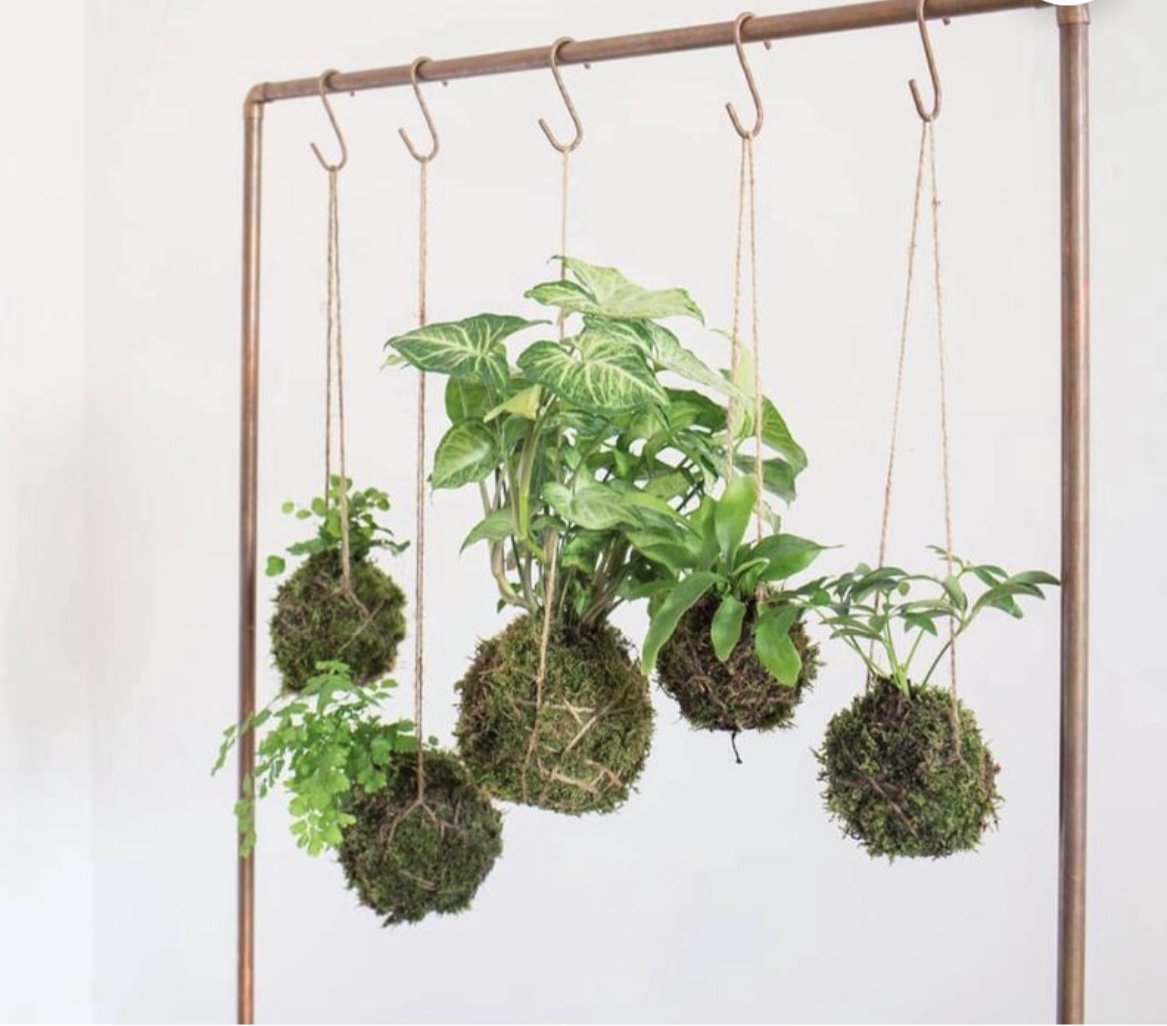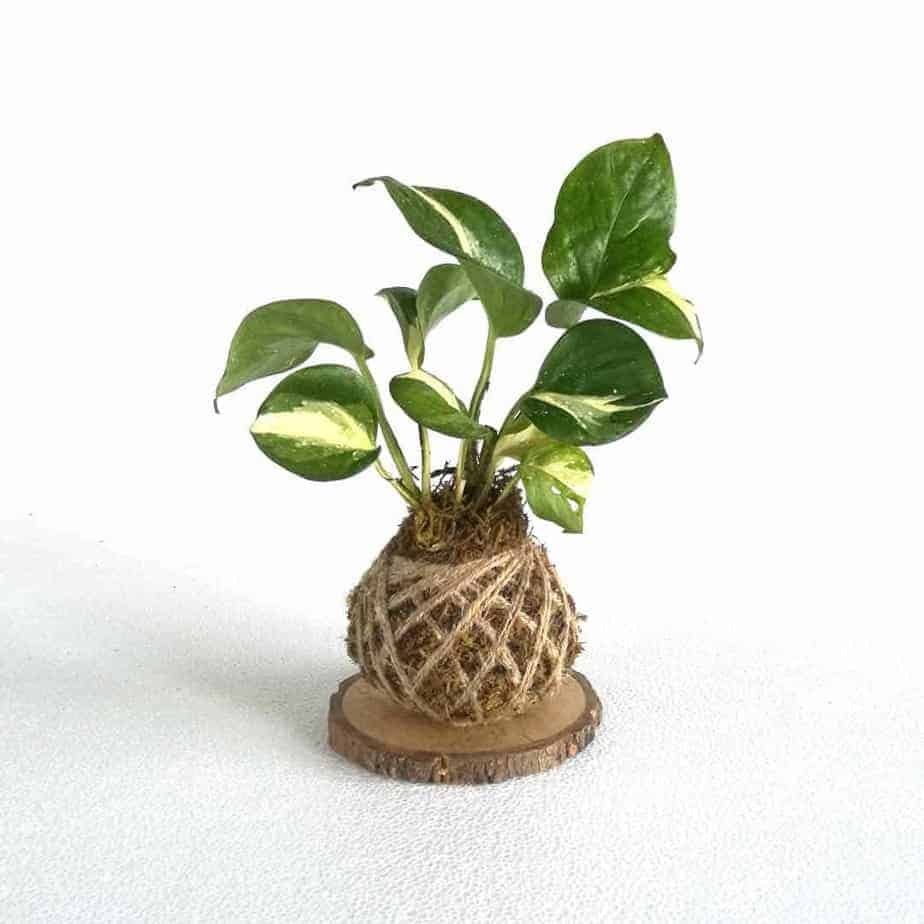 Image 1 of 2
Image 1 of 2

 Image 2 of 2
Image 2 of 2



"Kokedama" Style
Want a different style “planter” ? Here you are able to choose which plant you would like to receive prepared in a Kokedama technique.
Origin
Kokedama is a Japanese word that, simply translated, means “moss ball”. Sometimes called the “Poor Man’s Bonsai” or “string gardens,” the of art of binding plants into green, mossy orbs dates back centuries to the Edo era in Japan (around 1600 AD).
Thriving Location
A statement piece on your book shelf or hanging off a wall, Kokedama plants stand out no matter where you place them.
Sun
Kokedama prefer brighter light and less water than might be expected, though they should not be allowed to dry out completely. Protect from direct sun
Water
Water when moss feels dry but not crispy to the touch and soil around base of plant is barely moist.
*Kokedama are susceptible to over- and under-watering just like any other potted plant. Leave browning and crisping around edges tends to indicate under-watering. A brown "mushiness" of the leaves or stems, black stems at the base, and leaf-yellowing tends to indicate over-watering.
Want a different style “planter” ? Here you are able to choose which plant you would like to receive prepared in a Kokedama technique.
Origin
Kokedama is a Japanese word that, simply translated, means “moss ball”. Sometimes called the “Poor Man’s Bonsai” or “string gardens,” the of art of binding plants into green, mossy orbs dates back centuries to the Edo era in Japan (around 1600 AD).
Thriving Location
A statement piece on your book shelf or hanging off a wall, Kokedama plants stand out no matter where you place them.
Sun
Kokedama prefer brighter light and less water than might be expected, though they should not be allowed to dry out completely. Protect from direct sun
Water
Water when moss feels dry but not crispy to the touch and soil around base of plant is barely moist.
*Kokedama are susceptible to over- and under-watering just like any other potted plant. Leave browning and crisping around edges tends to indicate under-watering. A brown "mushiness" of the leaves or stems, black stems at the base, and leaf-yellowing tends to indicate over-watering.
Want a different style “planter” ? Here you are able to choose which plant you would like to receive prepared in a Kokedama technique.
Origin
Kokedama is a Japanese word that, simply translated, means “moss ball”. Sometimes called the “Poor Man’s Bonsai” or “string gardens,” the of art of binding plants into green, mossy orbs dates back centuries to the Edo era in Japan (around 1600 AD).
Thriving Location
A statement piece on your book shelf or hanging off a wall, Kokedama plants stand out no matter where you place them.
Sun
Kokedama prefer brighter light and less water than might be expected, though they should not be allowed to dry out completely. Protect from direct sun
Water
Water when moss feels dry but not crispy to the touch and soil around base of plant is barely moist.
*Kokedama are susceptible to over- and under-watering just like any other potted plant. Leave browning and crisping around edges tends to indicate under-watering. A brown "mushiness" of the leaves or stems, black stems at the base, and leaf-yellowing tends to indicate over-watering.